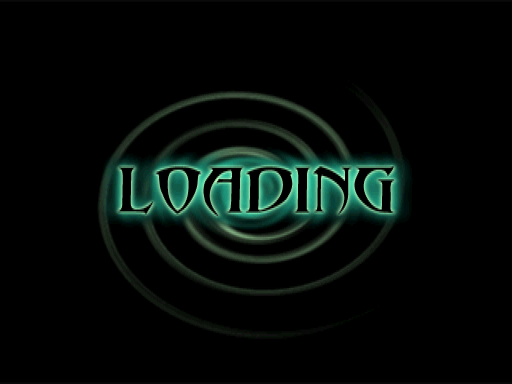Alexios
Cores, shaders and BIOS oh my!
Based on this video:
It was good at doing what it did at a high resolution but was unable to do any of the advanced rendering/lighting stuff PS2 could do.
That's a shit comparison by a shitty channel. MDK2 is visibly superior on DC with more advanced visuals like speculars, other details and dynamic shadows, as well as far less severe frame drops (yet still severe in spots) but he doesn't show most of it and pins much of it down to personal preference as he also keeps implying a crisper image in higher res is worse than a blurry image in lower res because somehow he can't see the aliasing as much. He seemingly doesn't even play the games but compares random videos of unknown quality, not even knowing if they're native hardware on crt vs anything else like emulation or a capture that doesn't do them justice. Another game surprisingly popular in such stupid comparisons, even though nobody should care to play it on any platform, is 4x4 Evo/lution, as if even B tier or worse Dreamcast games like Midway's 4 Wheel Thunder don't completely trash it effortlessly and in 60fps. The same channel did the even shittier Dreamcast vs PS2 video pitting Omikron of all games against GTAIII our coffinbirth here also uses to make his point. Dodgy ports of dodgy PC games expose DC's true lack of potential!
Games with advanced rendering on DC include Metropolis Street Racer, MDK2, Code: Veronica, Quake III, Le Mans, Ecco and more, some being later games (yet well within the threshold of what is called early when excusing PS2's own deficiences) before its untimely death that stopped many more from releasing. Other games also include hints of advanced visuals subtly wherever necessary, like some real nice water ripples Skies of Arcadia so casually drops like it's nothing, no big deal, in one early scene and (as far as I've played) never again as the story didn't demand it. Many less known games like Treyarch's Draconus: Cult of the Wyrm (Dragon's Blood in Europe) also did interesting things like its procedural physics based animation system and sprawling levels. It's a flawed curiosity, with better art and design (or just more time, money and a less troubled development) alongside its tech it could have been much more, but has a charm similar to games like Rune, Die by the Sword, Enclave, Severance: Blade of Darkness and others of their ilk. Not that games choosing to have some less advanced elements to focus on others as they all compete for resources should be considered inferior if the results are still great (like Daytona or F355 vs the racing games previously mentioned, in short, screw advanced features if games look as good or better without them).
The PS2 being the most advanced was as short lived as Dreamcast's run, systems like Xbox brought far more advanced stuff in a shorter time frame than it even got to show any of it off vs the Dreamcast but only the Dreamcast is excluded from that term because by PR prowess Sony dominated the generation and held it back, with the games being more advanced being much fewer Xbox exclusives that are now ignored to help make that point. No biases there, lol. What Sony peddles is the sweetspot, anything less like Dreamcast is not advanced, or good, anything more is useless, if it exists, otherwise it's also hailed as the best. Dreamcast held its own while it lasted and holds up
Games with advanced rendering on DC include Metropolis Street Racer, MDK2, Code: Veronica, Quake III, Le Mans, Ecco and more, some being later games (yet well within the threshold of what is called early when excusing PS2's own deficiences) before its untimely death that stopped many more from releasing. Other games also include hints of advanced visuals subtly wherever necessary, like some real nice water ripples Skies of Arcadia so casually drops like it's nothing, no big deal, in one early scene and (as far as I've played) never again as the story didn't demand it. Many less known games like Treyarch's Draconus: Cult of the Wyrm (Dragon's Blood in Europe) also did interesting things like its procedural physics based animation system and sprawling levels. It's a flawed curiosity, with better art and design (or just more time, money and a less troubled development) alongside its tech it could have been much more, but has a charm similar to games like Rune, Die by the Sword, Enclave, Severance: Blade of Darkness and others of their ilk. Not that games choosing to have some less advanced elements to focus on others as they all compete for resources should be considered inferior if the results are still great (like Daytona or F355 vs the racing games previously mentioned, in short, screw advanced features if games look as good or better without them).
The PS2 being the most advanced was as short lived as Dreamcast's run, systems like Xbox brought far more advanced stuff in a shorter time frame than it even got to show any of it off vs the Dreamcast but only the Dreamcast is excluded from that term because by PR prowess Sony dominated the generation and held it back, with the games being more advanced being much fewer Xbox exclusives that are now ignored to help make that point. No biases there, lol. What Sony peddles is the sweetspot, anything less like Dreamcast is not advanced, or good, anything more is useless, if it exists, otherwise it's also hailed as the best. Dreamcast held its own while it lasted and holds up
Last edited:






